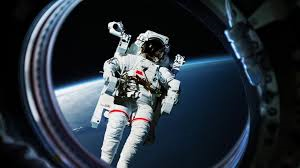
Breaking News
 2 Hours of Retro Sci-Fi Christmas Songs | Atomic-Age Christmas at a Snowy Ski Resort
2 Hours of Retro Sci-Fi Christmas Songs | Atomic-Age Christmas at a Snowy Ski Resort
 Alternative Ways to Buy Farmland
Alternative Ways to Buy Farmland
 LED lights are DEVASTATING our bodies, here's why | Redacted w Clayton Morris
LED lights are DEVASTATING our bodies, here's why | Redacted w Clayton Morris
Top Tech News
 Travel gadget promises to dry and iron your clothes – totally hands-free
Travel gadget promises to dry and iron your clothes – totally hands-free
 Perfect Aircrete, Kitchen Ingredients.
Perfect Aircrete, Kitchen Ingredients.
 Futuristic pixel-raising display lets you feel what's onscreen
Futuristic pixel-raising display lets you feel what's onscreen
 Cutting-Edge Facility Generates Pure Water and Hydrogen Fuel from Seawater for Mere Pennies
Cutting-Edge Facility Generates Pure Water and Hydrogen Fuel from Seawater for Mere Pennies
 This tiny dev board is packed with features for ambitious makers
This tiny dev board is packed with features for ambitious makers
 Scientists Discover Gel to Regrow Tooth Enamel
Scientists Discover Gel to Regrow Tooth Enamel
 Vitamin C and Dandelion Root Killing Cancer Cells -- as Former CDC Director Calls for COVID-19...
Vitamin C and Dandelion Root Killing Cancer Cells -- as Former CDC Director Calls for COVID-19...
 Galactic Brain: US firm plans space-based data centers, power grid to challenge China
Galactic Brain: US firm plans space-based data centers, power grid to challenge China
 A microbial cleanup for glyphosate just earned a patent. Here's why that matters
A microbial cleanup for glyphosate just earned a patent. Here's why that matters
 Japan Breaks Internet Speed Record with 5 Million Times Faster Data Transfer
Japan Breaks Internet Speed Record with 5 Million Times Faster Data Transfer
How to become a space tourist: 8 companies (almost) ready to launch

On April 28, 2001, 60-year-old American businessman Dennis Tito became the first tourist to leave Earth's atmosphere behind, spending nearly 8 days in space, much of it aboard the International Space Station (ISS)—and reportedly paying $20 million dollars to do so. Despite objections from NASA, who thought that Tito's training would not be sufficient by the time of his flight—Tito also thinks it's likely they were concerned about his age—tourism company Space Adventures negotiated a deal with the Russian agency Roscosmos that got Tito a seat in a Soyuz.
Since then, there have been only six other space tourists, all traveling aboard a Soyuz to the ISS. The last one, Cirque du Soleil co-founder Guy Laliberté, flew in 2009. The end of this early space tourism era came about due to the doubling of the crew size aboard the ISS in 2009, which left no room for visitors on the station, as well as the retirement of the space shuttle in 2011, which meant that NASA needed all extra Soyuz seats to launch its astronauts.

 $100 SILVER CONFIRMED?
$100 SILVER CONFIRMED?

